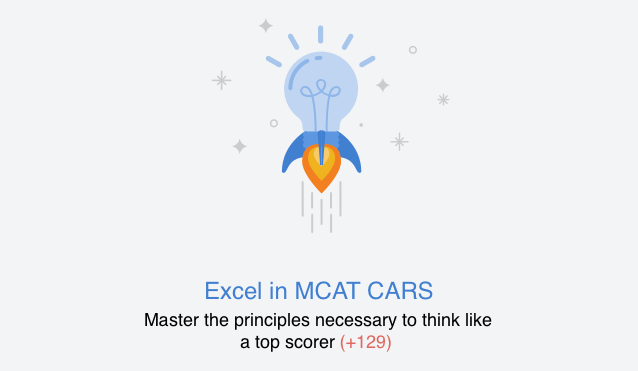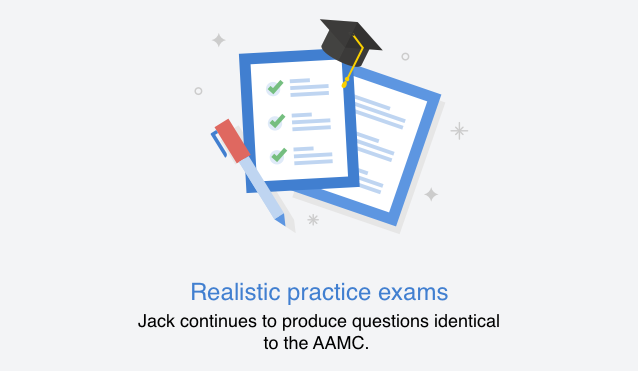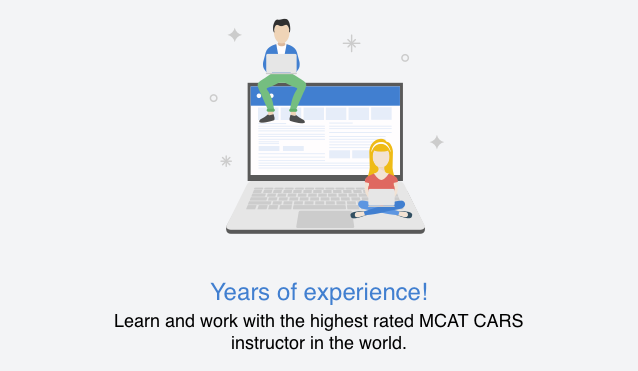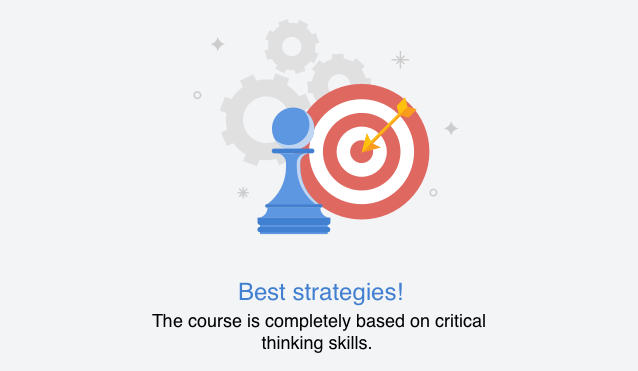Medical School Secondary Application Guide for 2025
The medical school application process can feel like a marathon, but the finish line is closer than you think. After crushing the MCAT® and submitting your primary AMCAS application, you’re now entering one of the most critical phases: secondary applications.
These school-specific applications are your golden opportunity to show admissions committees why you’re a perfect fit for their program. This guide breaks down everything you need to know about the 2025 cycle from timelines to essay strategies to help you craft secondaries that stand out.
What Is Medical School Secondary Applications?
Secondary applications are supplemental essays and materials sent directly by individual medical schools after your primary application is verified by AMCAS. While themes often repeat (diversity, adversity, “why this school”), each school’s prompts are unique, designed to assess whether you align with their mission and values.
The purpose of secondaries is to paint a more detailed, personal picture of you as a candidate—beyond your GPA and MCAT score.
👉 For a refresher, review the AMCAS Application Timeline 2025–2026.
Timeline for Secondary Application Submissions
Here’s a general breakdown of when to expect secondaries in the 2025 cycle:
- May 2025: AMCAS application opens.
- Late May / Early June: First day to submit AMCAS.
- Late June onward: Secondary applications start arriving 2–4 weeks after AMCAS verification.
- July–December: Secondary submission deadlines (specific to each school).
💡 Pro tip: Competitive applicants aim to return secondaries within two weeks. Quick, polished responses demonstrate enthusiasm and improve your chances at earlier interview invites.
Why Is It Important?
Medical schools use secondary essays as a key part of holistic admissions. They help schools evaluate:
- Your fit with their mission and community
- Your commitment to medicine and personal growth
- Your ability to reflect, write, and communicate clearly
Since your secondaries sit alongside letters of recommendation, your primary application, and your interview, a strong performance here can tip the scales in your favor.
See Also: Everything You Need to Know About A Secondary Application for Medical School
Components of Medical School Secondary Applications
1. Essays
- Length: 250–1,000 words depending on the prompt.
- Purpose: To explore your motivations, experiences, and values.
- Strategy: Use anecdotes, align with the school’s mission, and highlight qualities like leadership, empathy, or resilience.
2. Short-Answer Questions
- Length: 150–300 words.
- Purpose: Quick insights into challenges, leadership, or unique skills.
- Strategy: Be concise, specific, and impactful.
3. Additional Materials
Some schools may request:
- Extra letters of recommendation
- Curriculum vitae (CV)
- Creative submissions or project summaries
👉 Always follow the school’s instructions carefully.
See Also: Navigating the Medical School Application Process: Tips and Tricks

How to Write Compelling Secondary Essays
1. Self-Reflect First
Think deeply about your motivations for medicine and the experiences that shaped you. Authenticity resonates far more than generic answers.
2. Align With the School Mission
Research each school’s mission statement, curriculum, and values. Many applicants fail by writing cookie-cutter essays. Show schools why you belong there.
- Example: If a school prioritizes primary care in underserved areas, highlight your volunteer work in community clinics.
3. Show, Don’t Tell
Instead of saying “I’m resilient,” describe a time you overcame a personal or academic setback.
4. Embrace Diversity & Adversity Statements
- Diversity prompts: Discuss unique perspectives, cultural background, or life experiences that shape how you’ll contribute to medicine.
- Adversity prompts: Show resilience, lessons learned, and growth.
5. Edit Ruthlessly
Proofread for grammar, flow, and word count. A sloppy essay signals a sloppy applicant. Ask a mentor, advisor, or MCAT tutor to review.
Researching Schools for Tailored Applications
Secondary applications are not one-size-fits-all. Here’s how to make your essays school-specific:
- Dig deeper than rankings – check MSAR (AAMC’s Medical School Admissions Requirements) for mission statements, curricula, and student life.
- Explore student culture – review student organizations, mentorship programs, and interview past events.
- Highlight unique offerings – global health tracks, research initiatives, or rural medicine pipelines.
- Connect to faculty – mention research interests or programs that align with your goals.
How to Handle Writer’s Block & Stress
- Brainstorm before writing – jot down experiences tied to common prompts.
- Start small – write an anecdote or a single paragraph first.
- Change your environment – sometimes a coffee shop or library sparks creativity.
- Take breaks – refresh your mind before revisions.
See Also: The AMCAS Application Process 2024-2025
Secondary Application Examples to Spark Inspiration
Diversity Essay Example
Before you start writing make sure you include the following key points in your essay:
- Your racial or ethnic background.
- Specific cultures or traditions you identify with.
- Your upbringing environment (rural, suburban, or urban).
- Any other aspects of your identity that shaped your worldview (e.g., religion, sexual orientation, socioeconomic status).
- Significant challenges or obstacles you faced related to your background (e.g., language barriers, cultural differences, socioeconomic struggles).
- Activities or programs you participated in that fostered your understanding of diversity or healthcare disparities (e.g., volunteering in underserved communities, cultural exchange programs).
- Mentors or role models from diverse backgrounds who have inspired you.
- Explain how your experiences with diversity influence your desire to pursue medicine.
- Specific area of medicine you’re interested in, particularly relevant to diverse populations (if applicable).
- Explain how you believe your unique background can contribute to a more inclusive and equitable healthcare environment.
Here’s an Example:
A City Kid with Rural Dreams in Medicine
Imagine a childhood spent navigating bustling New York City streets, a melting pot of cultures, languages, and dreams. This was my world, shaped by the rhythmic hum of yellow cabs and the symphony of a hundred different languages. However, summers were spent a world away, immersed in the quiet serenity of my grandparents’ farm in rural Kansas.
This unique upbringing instilled in me a deep appreciation for diversity. In the city, I witnessed firsthand the struggles of underserved communities facing healthcare disparities. I saw the consequences of limited access to fresh produce, language barriers during doctor visits, and a lack of culturally competent care providers.
In contrast, my summers in Kansas were a stark reminder of the challenges faced by rural medicine. Long distances to specialists, limited access to mental health resources, and a shortage of doctors – these realities painted a different picture of healthcare disparity.
These contrasting experiences ignited a passion for medicine within me. I see myself bridging the gap between these two worlds, becoming a physician who embraces diversity and provides culturally sensitive care.
My experience volunteering at a free clinic in the Bronx honed my ability to communicate effectively with patients from diverse backgrounds. Translating medical jargon for Spanish-speaking patients and navigating cultural sensitivities during physical examinations were invaluable lessons.
Furthermore, assisting a local doctor in rural Kansas during harvest season exposed me to the unique challenges of rural medicine. I learned that physicians play a crucial role in these communities, from treating common farm injuries to managing chronic health conditions with limited resources.
My background as a city kid with rural roots fuels my desire to be a physician who thrives in diverse environments. I believe my ability to connect with patients from all walks of life, combined with my understanding of both urban and rural healthcare disparities, will make me a valuable asset to any medical team.
Adversity Essay Example
Before you start writing make sure you include the following key points in your essay:
- Significant academic challenges you faced (e.g., low grades in a specific subject, academic probation).
- Personal struggles you overcame (e.g., illness, loss of a loved one, financial hardship).
- Difficulties you experienced related to your identity or background (e.g., discrimination, bullying, cultural clashes).
- Describe your initial response to this challenge.
- Specify the strategies or resources you used to overcome it.
- Indicate whether you sought support from mentors, friends, or family.
- Explain how this adversity changed your perspective on life or your goals.
- Identify the skills or strengths you developed as a result of this experience.
- Describe how this experience has prepared you for the challenges of medical school and beyond.
Here’s an example:
Confronting bullies throughout middle and high school was a defining challenge. As a second-generation Armenian-American, I already felt like an outsider. However, the relentless taunts about my weight and the dismissive attitudes towards my academic achievements because of my gender were particularly isolating.
The bullying took a toll on my self-esteem, impacting my academic performance for a while. There were days I dreaded going to school, and focusing in class felt impossible.
The bullying often took the form of fat-shaming and misogynistic comments. These experiences not only targeted my appearance but also the strong Armenian women in my family who defied traditional gender roles to pursue higher education and careers. It felt like an attack on my heritage and the values I held dear.
Initially, I retreated inwards, feeling powerless and alone. However, the unwavering support of my family, particularly my grandmother, a fierce advocate for education for girls, rekindled my fighting spirit.
I confided in my school counselor and a trusted teacher, who provided a safe space to process my emotions and develop coping mechanisms. I also joined the school’s diversity club, where I found a community of understanding peers who had faced similar experiences.
My family, especially my grandmother, became my biggest source of strength. She shared stories of the challenges she faced as a young Armenian immigrant woman pursuing an education, reminding me of the resilience that runs in my blood. The support group at school also provided a safe space to share my experiences and find strength in solidarity.
Overcoming this adversity transformed me. I learned the importance of self-advocacy, the power of finding supportive communities, and the unwavering strength that comes from embracing your heritage. These experiences solidified my desire to pursue a medical career focused on women’s health and adolescent well-being.
This adversity instilled in me resilience, empathy, and a strong sense of social justice. I understand the profound impact that negative experiences can have on a person’s well-being, and I’m determined to be a physician who creates a safe and supportive environment for all my patients.
The challenges I faced during my school years equipped me with the tenacity and perseverance needed to succeed in a demanding field like medicine. I learned to advocate for myself and my patients, to navigate difficult situations with compassion, and to celebrate the unique strengths that each individual brings to the table.
My journey from a bullied student to a determined future physician is a testament to the power of resilience and the importance of finding your voice. I am confident that the skills and experiences I’ve gained will allow me to thrive in the challenges of medical school and serve as a compassionate and culturally sensitive physician.
Conclusion: Mastering Secondaries in 2025
Secondary applications are your chance to move beyond numbers and show admissions committees the real you.
- Reflect deeply on your journey.
- Write with authenticity and alignment to each school.
- Submit early for the best chance at interview invites.
By approaching secondaries strategically, you’ll stand out in the 2025 admissions cycle.
👉 Ready to boost your application? Start with Jack Westin’s Complete MCAT Course or sign up for free weekly sessions to strengthen your prep and application strategy.
Frequently Asked Questions
1. Do all applicants receive secondary applications?
Yes. Almost every medical school sends secondaries to all applicants who submit a verified primary application through AMCAS. However, some schools pre-screen based on GPA, MCAT, or other criteria before sending secondaries.
2. How long should my secondary essays be?
Each school sets word limits, but essays typically range from 250 to 1,000 words. Always stay within the required word count and focus on clarity, depth, and alignment with the school’s mission.
3. How quickly should I return secondary applications?
Aim to submit within two weeks of receiving them. Quick turnaround demonstrates enthusiasm and helps you get into the interview pool sooner—critical in schools with rolling admissions.
4. Are secondary applications as important as the primary?
Absolutely. While your AMCAS application gets you through the door, secondaries help schools decide whether to invite you for an interview. Strong essays can significantly increase your chances.
5. What if I can’t afford all the secondary application fees?
The AAMC Fee Assistance Program (FAP) provides discounts on primary and secondary application fees for eligible students. Check your eligibility early to plan your budget.
6. Should I recycle essays for different schools?
You can reuse core content, but never submit a generic essay. Tailor each response to the school’s mission, curriculum, and opportunities. Admissions committees can tell when an essay has been copied and pasted.
7. What are the most common secondary essay prompts?
-
“Why this school?”
-
Diversity and adversity statements
-
Future goals in medicine
-
Significant experiences shaping your decision
Check out our full guide on common secondary prompts to prepare in advance.
8. What happens if I miss a secondary deadline?
Missing a deadline usually results in automatic rejection. Always track each school’s deadlines and submit well before the cutoff. Consider making a spreadsheet or calendar reminder system to stay organized.










